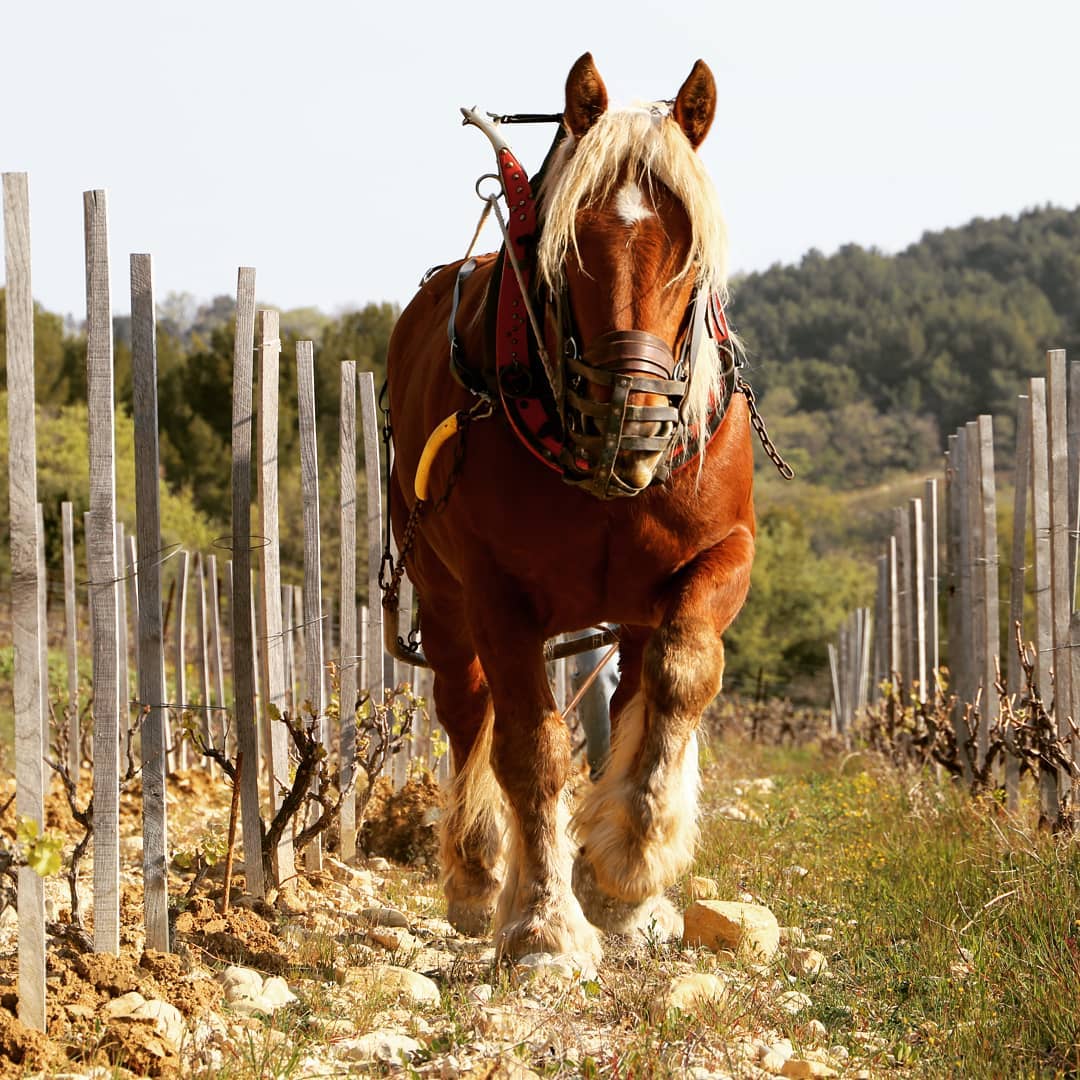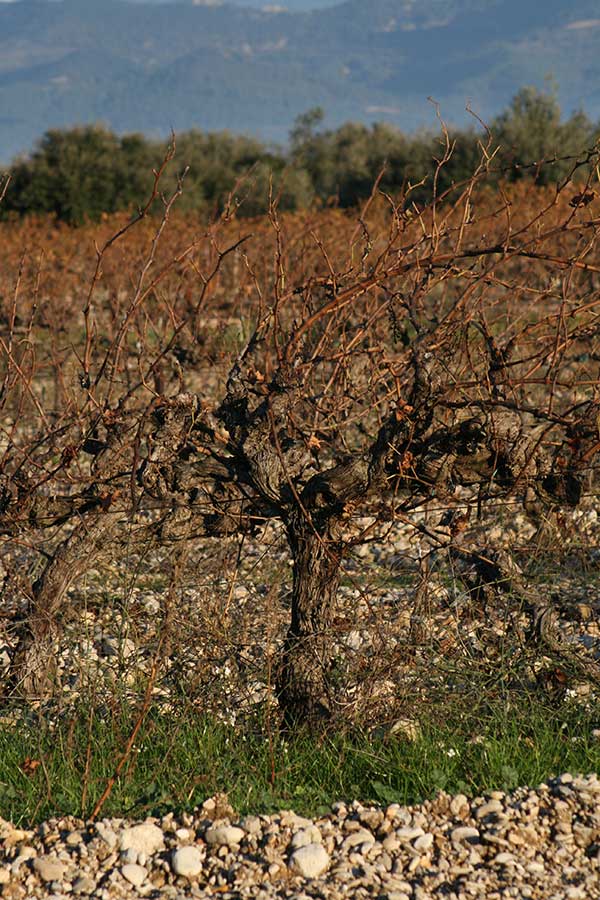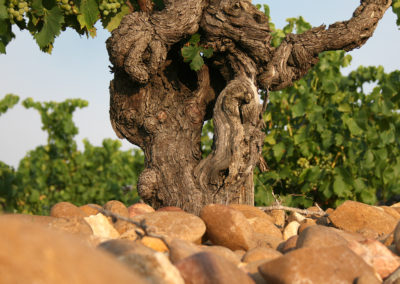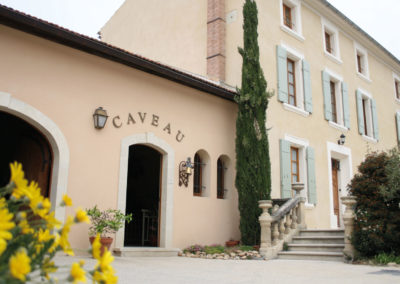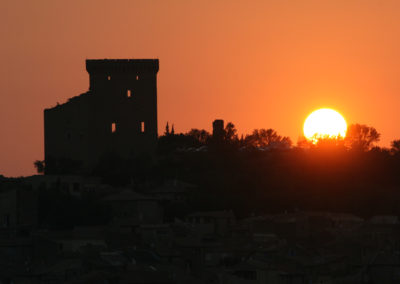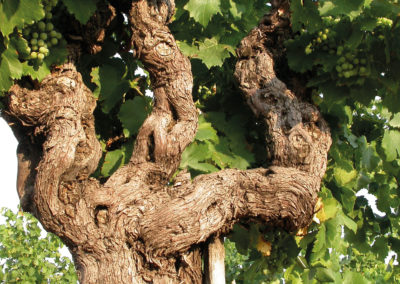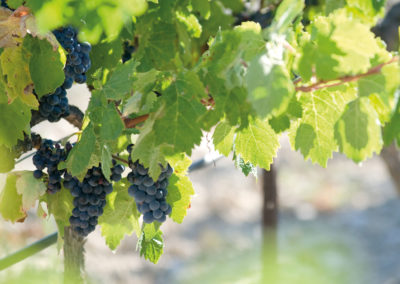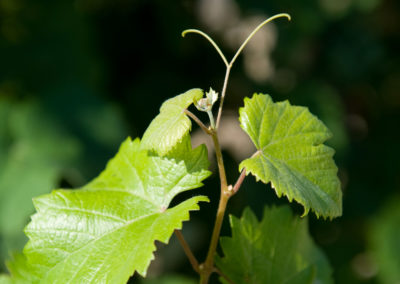The Estate
The Family
In 1988, Marie Lucile Brun took over management of the estate, succeeding her mother, Juliette Avril.
Her son, Stephan Brun, joined her in 2000 to head the estate’s commercial, administrative and viticulture departments.
A LITTLE BIT OF HISTORY
The Domaine Juliette Avril’s roots run long and deep.
As First Consuls of Châteauneuf-du-Pape, the Avril family has cultivated centuries of winegrowing and Provençal tradition. A century after Frédéric Mistral, our ancestor, Jules Avril, was awarded the “Golden Cicada”, symbol of the prestigious title of “Majoral du Félibrige”, the Academy of the Provençal language…
As early as 1928, before the Appellation of Controlled Origin (A.O.C.) was officially introduced, Juliette Avril’s father, Jean Avril, along with other local notable figures, participated in establishing fundamental rules for developing Châteauneuf-du-Pape wine.
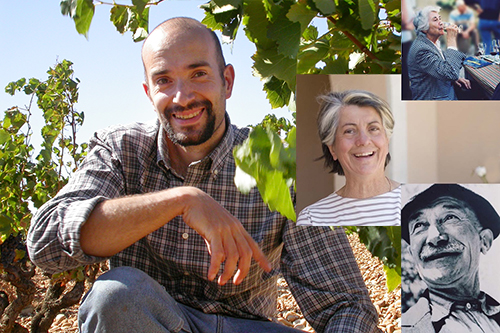
The Estate
The estate consists of 30 hectares of Châteauneuf du Pape, including 10 ha en AOP Cairanne, 1,30 ha en AOP Côtes-du-Rhône Villages “Plan de Dieu”, 10 ha in AOP Côtes du Rhône, 4 ha in AOP Ventoux, 2 ha in Vin de Cépage.
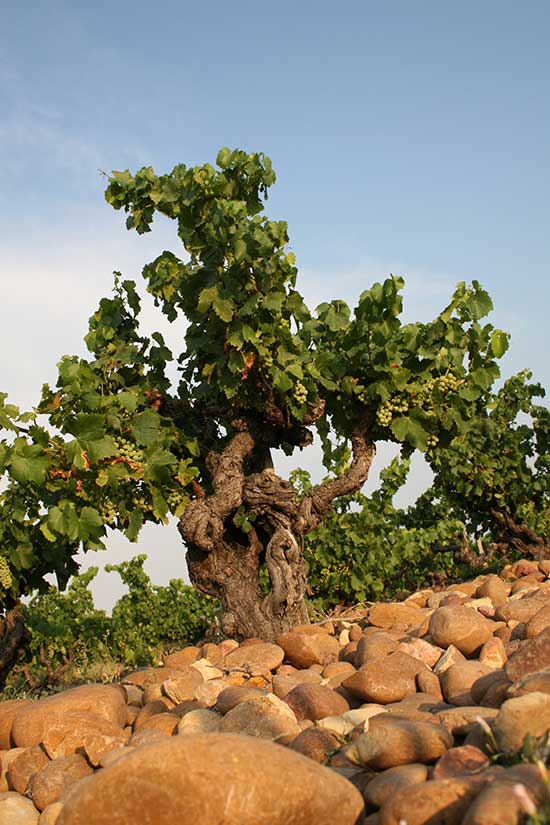
The Châteauneuf-du-Pape AOP vineyard
Half the vineyard is comprised of vines of over 50 years old, planted according to ancestral methods and includes a mix of grape varieties such as Grenache, Syrah, Mourvèdre, and Cinsault…
It is essentially divided into two parts:
The terroir is essentially composed of two parts:
The first part, to the north, consists of fertile plateaus, rich in clay-limestone soil, with its famous rolled pebbles, which have ability the store up heat during the day and restore it to the vinestock throughout the night.
Clay and sand make up the rest of the estate’s vineyard.
Reduction of weeding to the strict minimum.
Use of the 13 grape varieties specified by the appelation.
Use of the appelation bottle.
Production within the appelation’s geographic sector.
Harvesting by hand.
Yield limited to 35 hl/ha.
This is a summary of how your Châteauneuf-du-Pape is produced.
Cairanne
The soils of the Cairanne AOP
The estate’s vines in the Cairanne appellation grow in two types of terroirs: white clay with limestone, cold soil, that gives wines with tight, robust, and powerful tannins, and red clays, which offer generous wines and bear more complexity and aromatic richness.
Grape varieties: Grenache, syrah, mourvèdre.
Plan de Dieu
The soils of the Côtes du Rhône Villages Plan de Dieu AOP
They consist of a gravelly zaffer, that conveys moisture to the vines during the summer drought.
Thanks to this terroir and its grape varieties, the wine of Plan de Dieu is characterised by the garrigue or scrubland that surrounds it with aromas of thyme and undergrowth.
Grape varieties: Grenache; Syrah, Carignan.
Côtes du Rhône
PHILOSOPHY
Our commitment
Our commitment to the environment has become our trademark.
We adhere to the Terra Vitis specifications, and sustainable pest control methods.
Our commitment to the environment
Our environmental protection efforts include:
– Keeping treatments to a minimum.
– Favouring ploughing.
– Sorting and collecting recyclables.
– Reducing weeding to the strict minimum.
In addition, the following operations have been undertaken over the last years:
– Maintenance of embankments.
– Planting of hedges.
– Seeding of paths.
– Mating confusion (a technique designed to reduce the use insecticides).
– Follow appellation specifications.
– Use the 13 grape varieties specified by the appellation.
– Use the appellation bottle.
– Produce within the appellation’s geographic sector.
– Harvest by hand.
– Limit yield to 35 hl/ha.
Briefly, that is how a your Châteauneuf-du-Pape is produced.
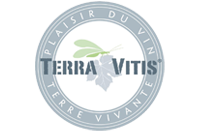
THE CELLAR
The Domaine is equipped with an ultra-modern cellar in which it vinifies its wine.
Stainless steel tanks for vinification, pneumatic press and a temperature control system.
Gravity techniques are used as much as possible.
Concrete tanks are used for the second fermentation and storage of the wine.
Ten-percent of our harvest is then placed in vats.
Once the vinification process is completed, after 16 months of work, the vintage is bottled.
Our wine cellar is certified to ISO9001 and HACCP standards.




